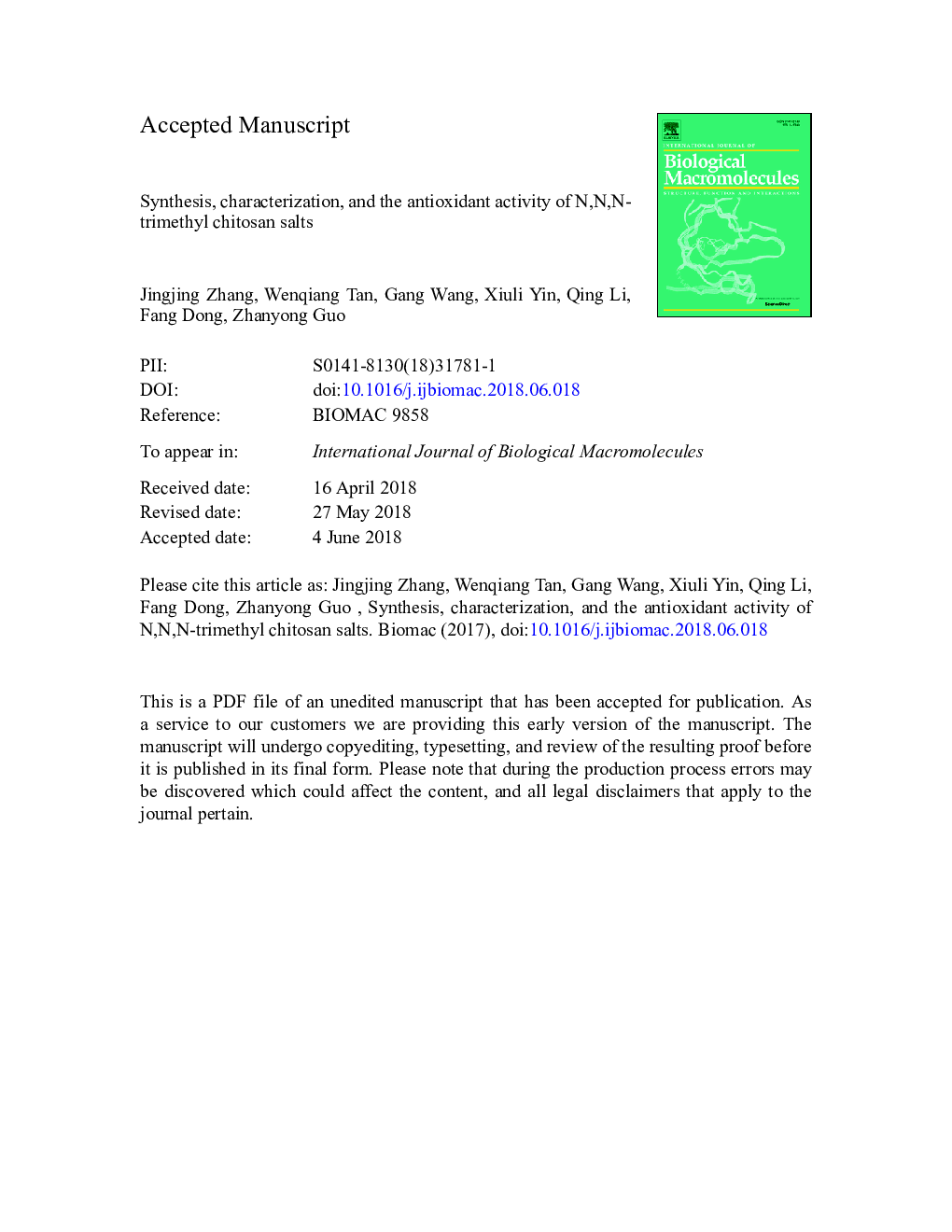| Article ID | Journal | Published Year | Pages | File Type |
|---|---|---|---|---|
| 8326681 | International Journal of Biological Macromolecules | 2018 | 26 Pages |
Abstract
Chitosan, possessing excellent properties, has been drawing broad attention. For the further utilization of chitosan, chemical modification is performed in improving its water solubility and the bioactivities. In the current study, four N,N,N-trimethyl chitosan salts, including N,N,N-trimethyl chitosan citrate (TMCSCi), N,N,N-trimethyl chitosan acetylsalicylate (TMCSAc), N,N,N-trimethyl chitosan ascorbate (TMCSAs), and N,N,N-trimethyl chitosan gallate (TMCSGa), were prepared via N,N,N-trimethyl chitosan iodide (TMCSI). The as-prepared products were characterized by FT-IR and 1H NMR. Meanwhile, the degrees of substitution were calculated by elemental analysis results. Furthermore, scavenging activities (against DPPH radicals and superoxide radicals) test and reducing power test were selected to evaluate the antioxidant property of N,N,N-trimethyl chitosan salts in vitro. The results indicated that TMCSAs and TMCSGa displayed excellent activity, probably due to the enhancement of ascorbate and gallate in antioxidant activity. However, because of the weak antioxidant property of citrate and acetylsalicylate, the activity was lower for TMCSCi and TMCSAc. For example, in the DPPH radicals scavenging assay, the scavenging rates of chitosan, TMCSI, TMCSCi, TMCSAc, TMCSAs, and TMCSGa were 25.22, 84.11, 6.90, 2.70, 94.92, and 96.75% at 0.4â¯mg/mL, respectively. Generally, TMCSAs and TMCSGa could be regarded as a potential source of antioxidants.
Related Topics
Life Sciences
Biochemistry, Genetics and Molecular Biology
Biochemistry
Authors
Jingjing Zhang, Wenqiang Tan, Gang Wang, Xiuli Yin, Qing Li, Fang Dong, Zhanyong Guo,
